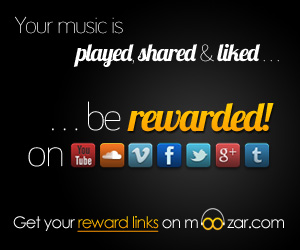By Carolyn Heneghan
Jamn is a new app that doubles as both a music tutor and guitar tabsmith. As a follow up to our Jamn app review, we sat down with Johnny Quattro, inventor and developer of the app to find out a bit more about the story behind it and his thoughts as to how this tool might change the way musicians approach jamming and songwriting.
SoundCtrl: How did you come up with the concept for the Jamn app?
Johnny Quattro: In the summer of 2010, I was invited to play a few songs at the Harmony Festival in California. When I got up on stage, one of the band members reaches out to me and says, “Johnny, this next song is in the key of A-flat,” and I was just stumped. I had no idea what it was. So I had no option but to turn my guitar volume down and strum a little bit of air guitar. I got through the show, and afterward I vowed that this would never happen again.
So I needed to come up with a some kind of tool that would help me remember the music theory quite quickly, and if I ever found myself in that situation again I could just pop it out and have it handy. So I invented a little wheel that kind of looks like a color wheel—it’s a cardboard cutout, I basically just cut out all the little compartments and wrote all the information down on the wheel.
SC: Was it a long and/or difficult process to turn that color wheel into an app?
JQ: Yes it was. It’s one thing to get this on paper and think, “Wow, this is a really cool thing,” and then I kinda shelved it. It wasn’t until about a year later when I showed a family member what I’d been using all along, because the family member had asked me about musical advice and theory. So I sort of said, “Hey, look at this little object, that’s something that I’ve been using.” I didn’t realize that it actually had the potential to teach others. So we started developing a much more official product, and we got a bit involved in patenting the actual wheel.
We went through about three design innovations, tested prototypes, and ran it through a bunch of focus groups—musicians, non-musicians, and a whole bunch of different people—to really find the right combination of parts and pieces to fit to most people’s comfort zone. The actual design process took us about 10 months to get to market.
 SC: How have these musicians found this helpful? What have been their reactions?
SC: How have these musicians found this helpful? What have been their reactions?
JQ: It’s been overwhelming. Honestly, it’s stunning. In the last three weeks, I continually get emails, at least one a day, that comes from a new customer that says, “Thank you so much, it’s so amazing,” and they give nothing but 5-star ratings. Last week we had a guy that reviewed it for the App Store and gave it 5 stars. He said he’d been playing for more than 25 years and was just so thankful that this was being released to market because it truly helps with music theory in a way that he never really understood it.
SC: What have the reactions been like with people who are new to music?
JQ: There is a small visual barrier, they look at this wheel and don’t really understand what it is. Once they start touching buttons, they quickly find that it’s something that can elevate them into music learning quite quickly. Once we explain, touch this button, touch that, and you can see what you’re doing on the guitar or on the piano, already within a few minutes they become comfortable with it. I would say that people who are beginning musicians spend time on the application and within 15 to 20 minutes, they’re actually playing something on the instrument.
SC: Have you been continuing to use this yourself?
JQ: When I first stitched t up I was using it night and day, and it really elevated my musical ability. Within six months of using it, my music has improved more so in the last six months that over the last 26 years. And I have not needed very technical books or anything like that, just researched a bit on the internet, read a few small textbooks, and got the jist of what music theory was about. I then converted it to this very simple utility, or tool, and as I’ve started using it, I’ve realized how much I was learning. And in six months my guitaring is just on another level entirely.
 SC: Are there particular algorithms involved in how this works?
SC: Are there particular algorithms involved in how this works?
JQ: Yes, of course. From the technical side of things, the application needed a lot of mathematical programming because say for example, every single position on the wheel itself has a particular number, and every single string on the guitar and every fret on the guitar has a corresponding number. So the two numbers have to match into this gigantic algorithm that allows you to use at the touch of a button. It knows the correct information for a chord, like for example a C chord, it will show the I, the III, the V, and then it will correspond to the instrument above so that the wheel and the instrument are perfectly matched. So that was a massive mathematical algorithm that took us months to figure out and tweak and get it right.
SC: How would you have found this helpful in the past when you were first learning?
JQ: It would have been so helpful because I would have been able to see which chords go together. I could’ve quickly, much more easily write songs at a younger age, purely because I had this tool, to figure out which are the nicer sounding chords and which go together.
SC: How does it feel that you’ve invented a tool that’s very likely going to improve the music experience for musicians all over the world?
JQ: On some days it’s surprising because I never expected it to have such a positive, profound kind of effect on people. It’s a wonderful feeling, of course, to be able to contribute to something I really love, which is music and playing music and sharing music—to be able to contribute on such a level is nothing less than great honor. So pretty much, my life 24/7 has been to devote myself to sharing this experience and sharing this tool with the world. It’s been a deeply wonderful experience, very moving.
The Jamn app is available for download from the App Store for $.99.

















Comments are closed.